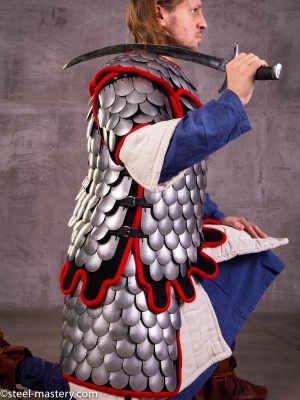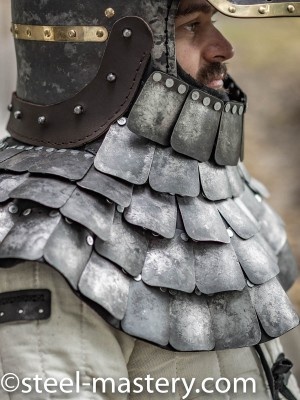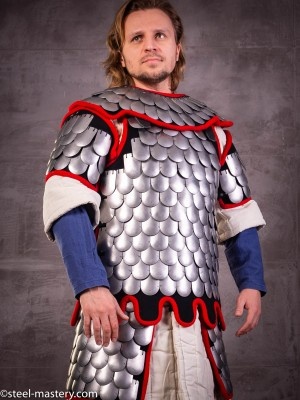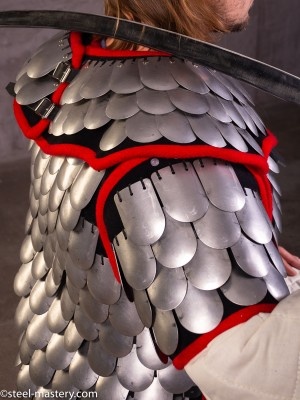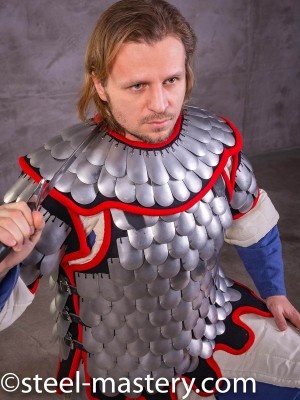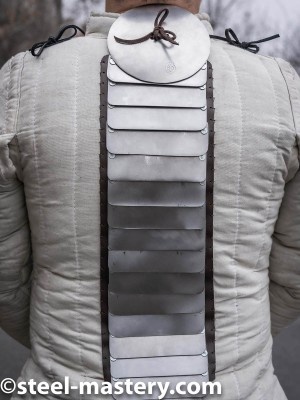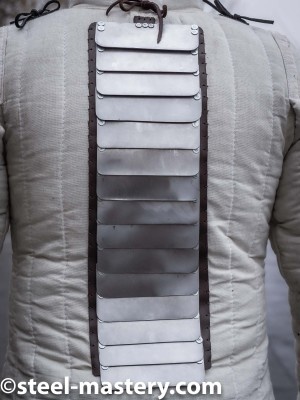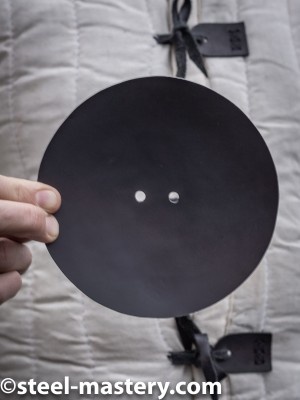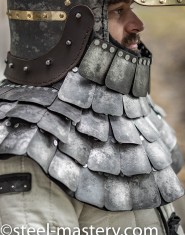Riguardo Corazza per corpo e lamiere
This section contains scale body armour and plates for independent crafting of protection. Here you can find various types of medieval scale defense, which were used in the Middle Ages in Europe, Byzantium and Ancient Rus.
Plates and armour are all handmade by our crafters and tailors according to individual parameters of customer. These models of body defense are based on the original armour, which is kept in the world museums and shown in the old manuscripts.
To order one of these items, you need to do few simple actions:
- Open the good you want;
- Choose the type of required metal (normal or stainless steel, titanium) and thickness of plates;
- Choose cover fabric and its colour (if available);
- Select buckles (steel or brass);
- Choose method of finish treatment (such as satin polishing, mirror polishing or blueing).
Please contact our manager, if any problems with order had arose. We’ll help you to define size, model and complement.
All samples of scale armour are perfect for participation in the tournaments of medieval fencing, historical festivals, bohurts and reenactment events. Depending on the complement, such defense is compliant to the standards and rules of such social movements, as SCA (The Society for Creative Anachronism), HEMA (Historical European Martial Arts), HMB (Historical medieval battles).
If you did not find required element of defense in this section or want scales of another shape, for example, we can make it individually for you. Just send us picture/pattern with detailed description to [email protected], and then we will quote you and discuss details of order.
Scale armour distinguishes from other types of plate protection by method of plates’ attachment to the base. Usually, thick fabric or crafted leather were used as base layer. Metal plates were sewn or (rare – riveted) to the cloth only from one side (unlike the lamellar armour). That’s why scale protection provided better mobility and maneuvrability of warrior – he could turn, bend or get down without efforts.
Metal plates had specific shape: upper edge was straight, bottom edge was roundish or a little pointed. Plates were being attached to the base like roof tiles. So outer design was looking as fish-scale, that defined the name of this armour. In some variations, scales placed one above other. Besides, common feature was a type of fixation, when upper row of plates overlapped the bottom one by one third or quarter. Such multi-layered design raised protection quality of armour, made it more durable.
For attachment of plates, small holes were cut near the upper edge. They were one or few-layered. Some type of scale armour had plates, which were not only sewn to the base material, but also joined one to another on sides. As, for example, the long armour of Assyrian warriors on relief images, which are kept in the British Museum.
In Rus, scale protection often was knee-length. Steel armour could look as sleeveless jacket, or had sleeves, which covered shoulders and arms. At the same time, size of plates on one armour could vary. The largest and longest plates covered back, chest and belly of warrior. The smaller scales were being sewn on the bent areas: forearms, elbows, hip joints.
Metal choice for plates depended on the geographical and geological factors. In Ancient Egypt and ancient Rome, armour with bronze scales was popular. Assyrian and Babylonians used forged steel for scales. Chinese and Korean crafters were making such defense of cooper scales.

